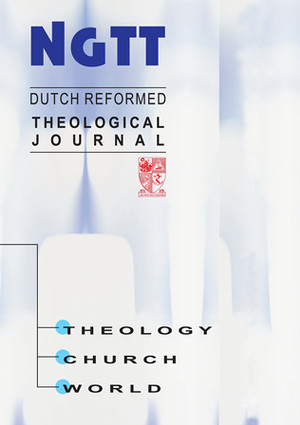As in heaven… Reading the Lord’s Prayer with a view to constructing a sermon
DOI:
https://doi.org/10.5952/54-1-2-324Keywords:
Our Father, The Lord’s Prayer, Hallowed be your name, Kingdom come, Will be done, Ecumenical symbolAbstract
The Lord’s Prayer is an important ecumenical symbol. It is the main prayer of the Christian Church and is prayed collectively in almost every worship service in churches over the world. In this, the first of three articles, the prayer is discussed with a view to eventually construct a sermon in which poetic material, hymns and songs are incorporated to form not only a part of the liturgy, but an integral part of the sermon itself. In this article the origin and setting, as well as the address and the you-petitions of the prayer are examined. In a second article the we-petitions and the doxology are explored and in a third all these aspects come into play for a concept sermon, incorporating hymnic and poetic material from ecumenical resources.Downloads
Published
2013-08-27
How to Cite
Kloppers, E. (2013). As in heaven… Reading the Lord’s Prayer with a view to constructing a sermon. NGTT | Nederduitse Gereformeerde Teologiese Tydskrif, 54(1&2), 1–11. https://doi.org/10.5952/54-1-2-324
Issue
Section
Articles | Artikels
License
Copyright of all NGTT material belongs to the Pieter de Waal Neethling Trust (PDWN Trust). The PDWN Trust is a trust fund established in 1932 with the aim of promoting quality theological research and publications.
The PDWN Trust pledges to maintain a legitimate scholarly record of the author's work and to defend the author's article against plagiarism and copyright infringement.
The PDWN Trust is committed to full Open Source publishing. This means that all articles published in NGTT will gradually be made freely available online. Authors maintain the right to:
- Share and self-archive their work.
- Make printed copies of their article for educational use.
- Present their article at a meeting or conference and distribute printed copies of the article
- Adapt and expand their published journal article to make it suitable for their thesis or dissertation.
- Republish the article (ensuring that the original article is cited as published in NGTT).
For any questions or queries in this regard, please contact the Editor.


